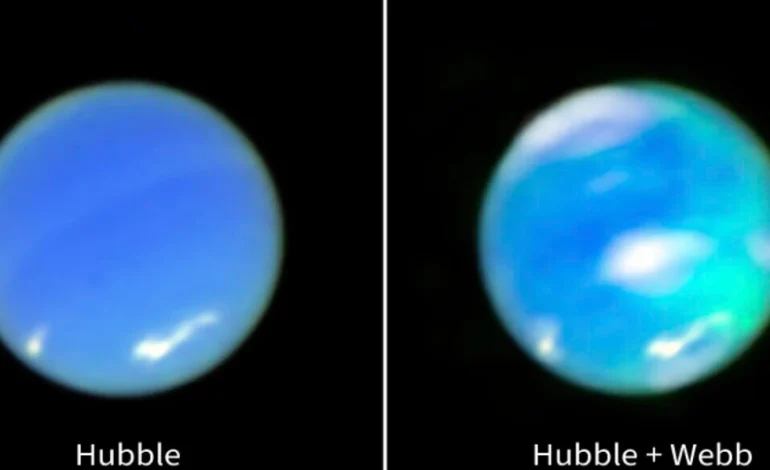For the first time, auroras have been observed on Neptune, thanks to the advanced instruments aboard the James Webb Space Telescope (JWST).
This discovery, revealed in a study published in Nature Astronomy, marks a significant milestone in planetary exploration, as the auroras on the distant planet had long eluded detection by previous spacecraft and telescopes.
Auroras, typically seen as the northern and southern lights on Earth, are a common feature across the solar system, appearing on planets like Mars, Jupiter, and Saturn. These dazzling light displays occur when charged particles, often from the Sun, collide with a planet’s atmosphere and interact with its magnetic field. However, Neptune’s auroras have remained hidden, despite years of attempts to observe them.
The JWST, launched in 2021, successfully detected Neptune’s auroras in June 2023, using its Near-Infrared Spectrograph. Unlike the auroras observed on Earth, which are typically found near the poles, Neptune’s auroras are located around the planet’s mid-latitudes. This unusual positioning is due to Neptune’s magnetic field, which is tilted by 47 degrees from the planet’s axis of rotation. This tilt leads to auroral activity in regions that are not typically associated with such phenomena on other planets.
The discovery of Neptune’s auroras is a breakthrough for astronomers who have been trying to spot them for decades. Henrik Melin, a planetary scientist and one of the study’s authors, noted that earlier missions, including the Voyager 2 spacecraft’s flyby in 1989 and subsequent observations with the Hubble Space Telescope, failed to detect these lights. The JWST’s ability to observe in infrared light, which is different from the ultraviolet wavelengths detected by previous missions, was key to this success.
The auroras on Neptune, while visible in infrared, are much dimmer than expected. The JWST’s findings show that the planet’s upper atmosphere has cooled significantly since Voyager 2’s visit, dropping from around 900 degrees Fahrenheit to approximately 200 degrees. This lower temperature has caused the auroras to shine with less than 1% of the brightness scientists had anticipated. This unexpected dimming has led to a new scientific mystery: What caused Neptune’s atmosphere to cool so drastically?
Scientists are eager to explore the implications of this discovery. The auroras provide a new way to study the planet’s magnetosphere and its internal processes.
“Auroras are like a TV screen, allowing us to watch the delicate dance of processes in the magnetosphere—without being physically present,” explained Leigh Fletcher, a planetary scientist and co-author of the study.
The New York Times and the Associated Press contributed to this report.










The latest news in your social feeds
Subscribe to our social media platforms to stay tuned